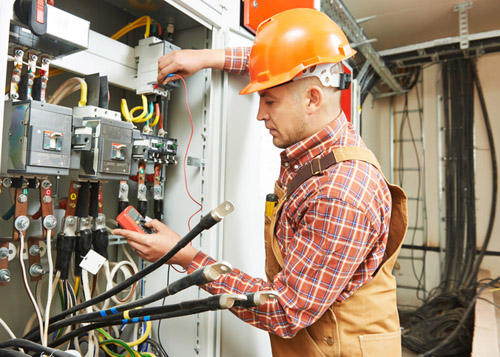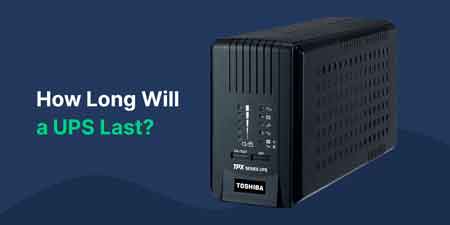What Are the Rules for an Electrical Team Explained

NFPA 70e Training
Our customized live online or in‑person group training can be delivered to your staff at your location.

- Live Online
- 6 hours Instructor-led
- Group Training Available
Download Our OSHA 3075 Fact Sheet – Understanding Electrical Hazards in the Workplace

- Learn the effects of electric current on the human body
- Understand OSHA safety standards and protective devices
- Discover essential lockout/tagout and grounding practices
What are the rules for an electrical team? Adhere to NFPA 70E, OSHA compliance, lockout/tagout, arc-flash PPE, documented procedures, competency verification, risk assessment, supervision, and clear communication for safe installation, testing, maintenance, and commissioning.
What Are the Rules for an Electrical Team?
Electrical teams follow NFPA 70E, OSHA, LOTO, PPE, risk assessment, permits, supervision, and clear communication.
✅ Comply with NFPA 70E, OSHA, and site electrical safety procedures
✅ Implement LOTO, arc-flash PPE, and energized work permits
✅ Verify competence, risk assessments, testing, and supervision
In any professional setting, following well-established rules is essential for safety and efficiency. For an electrical team, adhering to specific guidelines is even more critical, given the hazards of working with live circuits and high-voltage equipment. These rules encompass everything from basic electrical safety measures to team communication protocols. Understanding the rules and maintaining compliance ensures not only project success but also the safety and protection of team members. For context, many organizations align their programs with electrical safety in the workplace guidelines to standardize training and oversight.
Request a Free Training Quotation
What Safety Regulations Must an Electrical Team Follow on a Worksite?
One of the primary rules for an electrical team is to avoid electrical hazards by adhering to strict safety regulations. Safe work practices must always be followed, which include wearing personal protective equipment (PPE) and ensuring that all equipment is properly inspected before use. The team should always de-energize systems before working on them to avoid exposure to live parts. If the equipment cannot be de-energized, a detailed risk assessment should be conducted, and additional protective measures must be implemented. Establishing an electrically safe condition before tasks begin reinforces hazard controls and reduces the chance of exposure.
Sign Up for Electricity Forum’s Arc Flash Newsletter
Stay informed with our FREE Arc Flash Newsletter — get the latest news, breakthrough technologies, and expert insights, delivered straight to your inbox.
The use of lockout/tagout procedures is another vital safety rule. Lockout/tagout prevents accidental energization of equipment by isolating it from the power supply and ensuring the team is aware of equipment status. When using tools like ladders, those with conductive side rails should be avoided around electrical systems to reduce the risk of electrical shock. Teams should also review procedures to protect against electrocution so field crews apply consistent methods during energized work planning.
How Should an Electrical Team Organize Roles and Responsibilities During a Project?
An electrical team’s success depends largely on how well responsibilities are divided. Each team member should have clear roles and duties from the beginning of the project. Team members with specialized skills, such as handling electrical equipment or managing transmission and distribution systems, must be assigned accordingly. Role definitions should reference applicable electrical engineering safety practices to ensure specialists follow discipline-specific controls.
Leadership and supervision are also crucial for ensuring that tasks are completed safely and efficiently. Qualified electricians should supervise the work to ensure that safety protocols are strictly followed. Team leaders should conduct regular meetings to review progress, identify any potential safety risks, and ensure that all team members are aware of their specific tasks. Assigning tasks based on experience and certifications also helps to improve the overall workflow and minimizes errors.
What Qualifications and Certifications Are Required for Members of an Electrical Team?
Members of an electrical team must meet specific qualifications to handle the responsibilities of their roles. Certifications in basic electrical safety are a must for all team members to ensure they can safely work with electrical systems. For specialized tasks, such as working with ground fault circuit interrupters or transmission and distribution systems, additional qualifications may be required. Documented training should incorporate current electrical safety procedures that address equipment inspection, isolation, and verification.
Some team members may need certification in lockout/tagout procedures to ensure equipment is properly de-energized and cannot be re-energized until it is safe. Proper understanding of how to work with circuit breakers and how to properly ground equipment is crucial for ensuring safe operations. Moreover, specific national or regional certifications may be required depending on the jurisdiction in which the team operates.
What Are the Best Practices for Communication Within an Electrical Team?
Effective communication is another essential rule for an electrical team. Clear communication can protect employees from hazards, ensuring that all team members are aware of safe working conditions, potential risks, and the current status of electrical systems. Regular briefings before and after each shift help ensure that all team members know the scope of the work to be done and any safety precautions that need to be followed. Pre-job briefings can be structured around core electrical safety requirements so expectations are clear to every crew member.
Using communication tools such as radios or mobile devices during fieldwork ensures that everyone stays connected, especially when working in larger or complex environments. All team members should also be trained to report potential hazards, like damaged electrical cords or malfunctioning electrically powered equipment, immediately to prevent accidents.
How Should an Electrical Team Handle Emergency Situations or Equipment Malfunctions?
Handling emergencies is an integral part of an electrical team's responsibilities. In the event of an electrical fire, team members must know how to use fire extinguishers rated for electrical fires and must not use water, as this can lead to electrical shock. Emergency protocols should include shutting down power supplies as quickly as possible to minimize the risk of further hazards.
FREE EF Electrical Training Catalog
Download our FREE Electrical Training Catalog and explore a full range of expert-led electrical training courses.

- Live online and in-person courses available
- Real-time instruction with Q&A from industry experts
- Flexible scheduling for your convenience
In cases of equipment malfunction, such as a faulty circuit breaker, the affected equipment should be immediately de-energized, and no team member should attempt to repair it until the issue is diagnosed by a qualified electrician. Teams should also ensure regular testing and maintenance of all electrical equipment to prevent emergencies from occurring in the first place. Post-incident reviews should capture lessons learned and feed back into ongoing electrical safety work programs to improve resilience.
Following the rules for an electrical team is critical for maintaining a safe and efficient work environment. From avoiding electrical hazards and ensuring safe working conditions to organizing roles and ensuring properly grounded equipment, these rules help electrical teams function effectively while protecting both personnel and equipment. By adhering to industry standards and implementing best practices in communication, safety, and emergency response, an electrical team can safely and successfully complete even the most complex projects.







